HRM Assignment: Implementation OfHR Theories &Models In Real-Life Scenarios
Question
Task:
Prepare a detailed and well-researched HRM assignment addressing the following tasks:
Task 1:
Q1.1 Critique contemporary approaches to human resource management and development.
Harvard Model
Contextual Model
The 5-P Model
The Hard and Soft Models
Q1.2 Identify research evidence on employment and effective approaches to human resource management, learning and development practice and critically evaluate how the research evidence has affected management thinking and practice.
Q1.3 Identify people management practices that have changed as a result of research evidence and led to positive organization outcomes, citing real examples.
Task 2:
Q2.1 critically evaluate the main theories on motivation, commitment, and employee engagement and their relevance in contemporary organizations.
Q2.2 Illustrate how management practice has used, adapted, or developed theoretical models using examples of organizations.
Q2.3 Justify how employee engagement is a positive factor in organizational health terms and provide real examples of this for a range of different organizations.
Task 3:
Q3.1 Evaluate contemporary thinking about what makes a leader in your organization.
Q3.2 Critically evaluate the role of leadership in your organization and characteristics of effective leader (s).
Q3.3 Identify relevant and suitable leadership development activities and experiences.
Task 4:
Q4.1 Critique the role of HR management and development and How HR and other managers can productively work together.
Q4.2 Discuss the need for professional and qualified HR practitioners.
Q4.3 Critically evaluate how ethics and organizational culture can be influenced by HR practices.
Answer
Introduction
The HRM assignmentmainly discusses different HR theories and models that are implemented and practiced in a real-life scenario. The organizations develop and implement their HR strategies based on theoretical models and concepts to implement specific ideas of HR in a broadway. The paper includes four tasks and each task consists of three questions that are related to the models and concepts of HR and their usage. The paper also includes examples of real-life organizations that have applied the theoretical models to carry out the HR practices.
Task 1
Q1.1 Critique contemporary approaches to human resource management and development
Harvard model
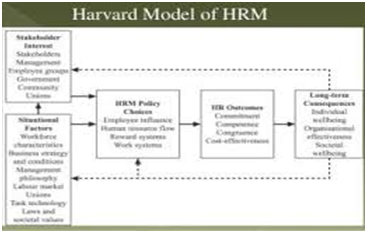
Figure No: 1: Harvard model
(Source: Aloumedjo and Thierry, 2018)
Harvard model of HRM mainly consists of six different critical components i.e. stakeholder's interest, choice of HRM policy, situational factor, HR result, long-term outcomes, and an advice loop. All these components are interrelated with each other. According to the given structure in the above image stakeholder interest that has been mentioned on the left comes along with management, employees, government, and many more. These stakeholder interests get affected by the situational factors which dominate HRM policies resulting in the HRM outcomes (Aloumedjo and Thierry, 2018). If the result gets positive it leads the company towards long-term consequences. Apple uses the Harvard model to retain its skilled employee enhancing the innovation to sustain and for long-term consequences.
Contextual Model
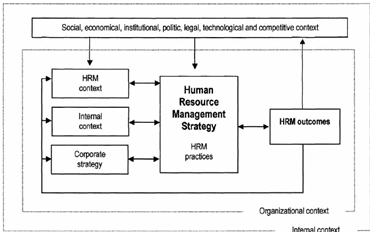
Figure No: 2: Contextual model
(Source: Sotsenko, 2017).
The contextual model of HRM highlights the significance of environmental determinants by counting variables i.e. dominance of social, institutional as well as political factors which has been underrated by other models of HRM. The approach of this model is broader, blends the HRM system in the territory where it develops. According to Schuler and Jackson, vast sets of stakeholders are tangled in the expression and execution of HR strategies (Sotsenko, 2017). These stakeholders can be from both internal as well as external and both get influenced by such strategic decisions. For example, the employees that have been hired by Apple are according to the institutional context where the employees get hired by their education qualification, their skills to maintain the company's brand name.
The 5-p’s model
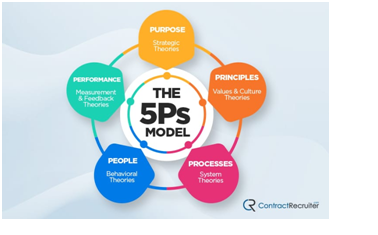
Figure: No: 3: The 5Ps Model
Source: (Pryor, Smith, and Toombs, 2019).
Philosophy: Philosophy in this model refers to the functioning environment across the company. In this model Philosophy act as a mirror that reflects statement that has been made by the company regarding its human resources. Policies: company's rules and regulations along with the laws of employment come under policies. It incorporates guidelines for action on an individual which are related to the company's business issues as well as HR programs. Programs: This facilitates transformation to address serious human-related issues in business (Pryor, Smith, and Toombs, 2019). Practices: Several activities such as acquiring knowledge, development, etc. come under practice, and for leadership managerial as well as operational role practices encourage require role behaviors.
Processes: The approach or action of an organization for its operation.
For example, Google uses the 5-p model to hire the smartest employees since the company believes in best to provide quality service to its users.
The hard and Soft Model
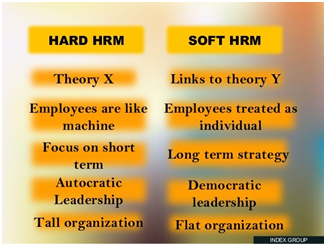
Figure: No: 4: Hard and Soft model
(Source: Sadalla and Ülgen, 2018).
Hard and soft models are the two widely used models in which hard models focus on determining the workforce that will help the company to recruit employees as per the needs (Sadalla and Ülgen, 2018). On the other hand, the soft model approach focuses on treating the company's employees as a valuable resource of the business. Most of the company's focus on soft models since it allows them to core on long term planning of the business, also the company centering on this model understands the need of their people. For example, Apple uses a soft model and motivates its employees, and provides space for their personal development. Where Samsung uses hard model approaches to determine the workforce performance.
Q1.2 Identify research evidence on employment and effective approaches to human resource management, learning and development practice and critically evaluate how the research evidence has affected management thinking and practice
Research evidence
• The newspaper acts as a source of information that provides evidence in a wider range related to the existing issues of employment along with the efficacious ways to tackle the problems.
• Journal, as well as the articles, provides access to such information that provides the objective and mission of the companies (Gitomer and Crouse, 2019).
• Public surveys allow the researcher to explore a large group of people with an enormous amount of information.
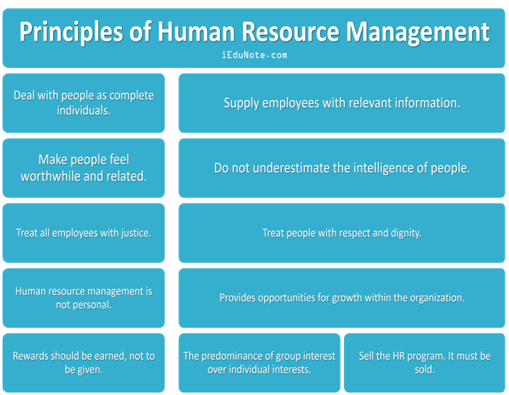
Figure: No: 5: Effective approaches of HRM
(Source: Gitomer and Crouse, 2019).
Effective approaches of HRM, learning, and development
An effective approach of HRM contributes to the company with enhanced productivity and performance where the company is service or product based. The relationship with the employees created after such an effective approach of HRM will allow the company to achieve a shared goal (Gitomer and Crouse, 2019). Also, an effective approach believes in educating and developing the employees, as they get support from their employers.
• In this effective approach to HRM of learning identifying the skills of the employees and allocating the work as per their capabilities will help the company to complete the work within given deadlines (Dermol, 2014).
• Secondly, at the time of training that has been provided by the company to their employees, the employers need to make sure so each individual gets a clear understanding of their mission and vision.
• Thirdly, for effective HRM and learning, the team members need to encourage open communication to share ideas with each other thus sharing brainstorming concepts within the team member (Jewell, 2020).
Critical evaluation on the effect of research evidence on management thinking and practice
As mentioned above different pieces of research evidence have their own significance and they support several organizations in their own ways. Mostly the research evidence provides information to the company but such information provided can’t be considered as fully accurate (Gitomer and Crouse, 2019). For example, while doing a public survey the collected information doesn't appear to be genuine which borders the company to get access to the genuine issues in the particular area of need Hence the company will not be able to go through the need for employment. The primary research evidence used by Apple was not enough to permit the detailed examination of the issues that have been created at the time of maintaining Hr practices. Thus because of less and inaccurate information the company was employment needs in some of its specific areas of improvement.
Q1.3 Identify people management practices that have changed as a result of research evidence and led to positive organizational outcomes, citing real examples
While approaching research evidence the company will be able to gain knowledge about the requirements of the employment of people involved in the company both in terms of the internal and external environment. This approach will help the company to identify and analyze the area of improvement while managing the company's human resources and making changes as per the needs. Sometimes a company won't be able to visit each employee and customer personally here comes the research evidence to help the company to acquire information about its business hence proceeding with change accordingly. Research evidence has not complimented many companies but for some of them, it appears to be an eye-opening approach towards the flaws in their products and services (Arpentieva, 2020). For example, for a few years, Apple has maintained its consistency in remaining top in customers' preferences. This is all because Apple highly relies on the customer's knowledge and their feedbacks for the innovation and enhancement of their products. The company always welcomes and appreciates the feedback of the customers and makes changes accordingly. A feedback survey appears to be a useful tool for Apple to collect customers' insights. The company immediately sends email surveys after the purchase of their products and the customers are asked for reviews for their experiences. Thus this process helps the company to gain accurate information about their product and their services.
Another example is Netflix; they collect feedbacks through the process of online research evidence. The approach of collecting online evidence provides company information about the customer's reviews and experiences (Collins, 2021). The company believes in providing quality service to its customers and this research evidence plays a key factor to achieve their goal. Netflix being a customer-centric company gives top priorities to its people and customers. By acquiring practical insights from their customer's feedback and making them scripted in their plan and company's ideas, Netflix prompts original shows which appear to be exceptionally well and lead Netflix towards a positive outcome. Also, they work on the application of their digital platform thus there will be no obstacles for its customer while viewing their application.
Task 2
Q2.1 Critically evaluate the main theories on motivation, commitment, and employee engagement and their relevance in contemporary organizations
Theory on motivation
The theory of motivation primarily emphasizes motivation for the employees, while creating a higher level of enthusiasm in order to achieve the organizational goal. Among various theories of motivation, Maslow's Hierarchy of needs is considered to be one of the well-known and effective theories of motivation around the globe. As per this theory, people always desire to gain something and their want and desire always depend on what they already have. Maslow states that people have five different levels of need while seeking satisfaction. The levels of needs are categorized as psychological, security, love and belonging, esteem, and self-actualization need (Haque, Haque, and Islam, 2014). However, as per this theory, the employees' performance is mainly dependent upon the safety and self-esteem need.
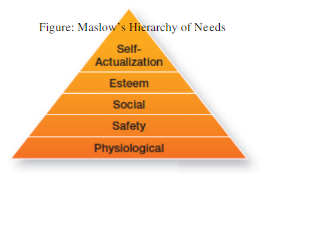
Fig. 6- Maslow’s hierarchy of need
Source- (Haque, Haque and Islam, 2014)
The theory of Maslow's Hierarchy of Needs can be noticed in Apple Inc, where it uses the approaches of this theory in order to motivate the employees. Considering the need for esteem, and safety Apple provides equal opportunities and treatment to both the male and female employees, which highly motivates them to work with the aim to achieve the organizational goal (Amin and Munsi, 2020). Furthermore, Nike also offers various incentives, both monetary, and non-monetary, that motivate the employees to work within dedication within the organization.
Theory on Commitment
The theory on commitment is a multidimensional construct, indicating a relative strength of the individual, along with the identification, and involvement to a specific organization. There are three major dimensions of commitment theory, affective, normative, and continuance commitment, which are based on the perceptions, and attitudes of the individual employees. These three dimensions of the commitment theory represent various psychological states of the employees while making it possible for the development of the independent measures, concerning each dimension (Jabri and Ghazzawi, 2019).
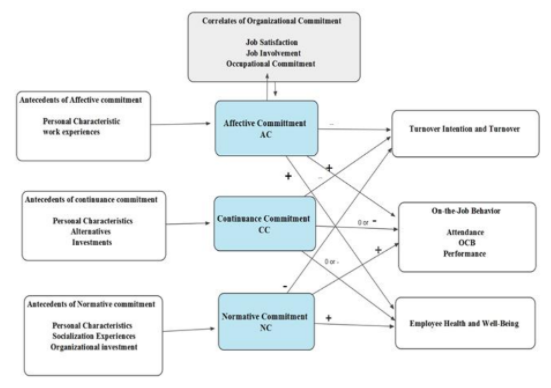
Fig. 7- Three major dimensions of Commitment theory
Source- (Jabri and Ghazzawi, 2019)
A company such as Samsung uses commitment theory because as a communication and information technology, brand loyalty is one of the primary objectives of Samsung. The affective commitment, deliberate inertia, and the psychological status of the employees, in concern to the commitment to the organization, will not only help the organization to achieve the organizational goal but also sustain customers (Shi, Liu, and Sirkeci, 2016).
Theory on employee engagement
A strong relationship can be noticed between the satisfaction, and motivation of the employees, which affects employee engagement as well. As per Khan's theory of employee engagement, the engagement of the employees with their work depends on three psychological needs such as satisfaction, meaningfulness, and, the safety of the employees. However, there are various models that relate to the employee theory such as David Sirota's engagement model. This is one of the primary models which states that in order to achieve the organizational goal, it is crucial for the organization to build a great relationship with the employees while establishing fair policies, and system, and providing equal opportunities (Vandana and Renuka Murthy, 2021).

Fig. 8- David Sirota Engagement Model
Source- (Vandana and Renuka Murthy, 2021)
The use of the David Sirota Engagement Model, in concern to the employee engagement theory, is effectively used by Google. With the use of the theory and model, Google is able to effectively able to engage the employees, where the employees are also noticed to be working with high satisfaction. However, the limitations of this theory are the lack of mediating the role of employees, cross-cultural and personality differences, which might affect employee engagement within the organization (Sun and Bunchapattanasakda, 2019).
Q2.2 Illustrate how management practice has used, adapted, or developed theoretical models using examples of organizations
Scientific Management Theory
The theory of scientific management was introduced by Frederic Winslow Taylor. As per this theory, there are four principles of management, which states that developing a rule of science is essential for managers, each employee has to be trained scientifically, the workforce should work together to ensure the principles of management, and the work, as well as responsibility, should be divided equally. This theory is used by Netflix, which helps them to better understand the capabilities of their employees, which eventually helps them in terms of decision making, and dividing the work equally as per the ability of the employees. Thei8 theory also aids in designing the work in order to deliver an efficient performance (Bright et al., 2019).
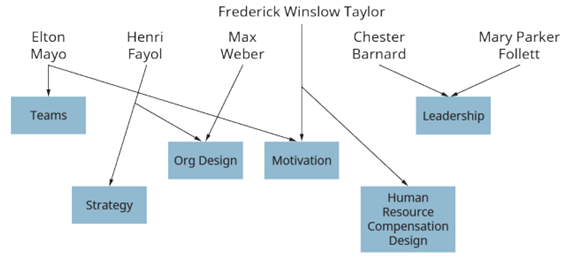
Fig. 9- Development of management through scientific management theory
Source- (Bright et al., 2019)
Bureaucratic management theory
The Bureaucratic management theory proposed by Weber is an ideal theory, which is a schemed theory comprised of theorized features with which reality can be compared. It is a suitable example of legal domination, and this theory is used by various companies, such as Google, Sony, etc, in order to create a healthy working environment. This theory emphasizes in forming rules on the basis of the employee, in alignment with the organizational culture. Its principles are based on laws and regulations, employee protection, the hierarchy of functions, and so on (Serpa and Ferreira, 2019).
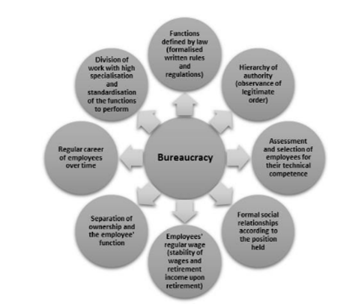
Fig. 5- Characteristics of Bureaucratic management theory
Source- (Serpa and Ferreira, 2019)
Human relation theory
The Human relation Theory was proposed by Elton Mayo, which emphasizes the impotence of the individual in regard to the organization. This theory is applied by various large companies such as Wall-mart, Toyota, Apple, etc. As per this theory, more focus is given to the emotional and psychological aspects of humans (Oluwatoyin, 2021).
System management theory
The system management theory states that the employees within the working environment need to be given importance because it acts as an alternative method in terms of managing and planning within the organization. This theory is used by companies such as Google, Nike, and Sony, in order to build a healthy relation and working environment, while avoiding conflicts among the employees as well as with the organizations. This theory emphasizes the part of the relations rather than minimizing the entity within the parts or elements of the organization. The basic components of this theory are inputs, transformation process, external variables, and outputs (Chikere, Nwoka, and Jude, 2015).

Fig. 10- Components of System management theory
Source- (Chikere, Nwoka, and Jude, 2015)
Contingency management theory
The contingency management theory is also referred to as Leaders Managerial Adaptation theory because it primarily focuses on the leaders of the organizations. Companies such as Google, Toyota, etc use this theory in terms of developing leaders while building the leadership capabilities within the employees. This theory was proposed by Fred Fiedler, which states that leaders vary from one environment to another, and the effectiveness of the leaders depends upon the managerial style of the leaders, and the favored situation (Shala, Prebreza, and Ramosaj, 2021).
Q2.3 Justify how employee engagement is a positive factor in organizational health terms and provide real examples of this for a range of different organizations
Organizational Health
Organizational health is said to be the aptitude of a business to align, implement and renew itself more rapidly than its competition. Research has found that strong organizational health boosts the performance of the business and helps its leaders to make a direction of continued improvement.
Positive effects of employee engagement in organizational health
In the current corporate world, employee engagement is possibly the most crucial metric for organizations. It is directly influenced by the organizational growth, experienced through value addition by employees and the perception of the organization. Considering the real-world example, Facebook shows a great employee engagement that shows positive effects within its business performance as well as operations (Patro, 2013). On the other hand, companies such as Virgin and Google are the key examples of extraordinary employee engagement that promotes reaping and tangible benefits. Hence, there is no such factor as perfection in those companies that the business operations of those companies are at peak at the current business scenario. Hence, it helps the organization to effective strategies and builds an effective work culture as well as reduce employee turnover and this will eventually lead the firm towards positive business operations. All the firms that have been discussed in this section engaged their employee by helping them to connect with the management and make them aware of their surroundings with positive attractions with incentives, acknowledgment, and rewards.
Task 3
Q3.1. Evaluate contemporary thinking about what makes a leader in your organization.
Leadership is one of the crucial aspects in an organization that guides the path of an organization. The style a leader implements and the traits of a leader is different from each other, and based on the fact the outcomes related to leadership in organizations also vary. There are different qualities and traits of a leader that are described and defined by theorists and psychologists (Muteswa, 2016). There key qualities that should be present in a leader are an inspiration, confidence, proper communication, honesty, integrity, transparency, commitment, ability to attract talent. The figure below indicates the top qualities that should be present in a leader.
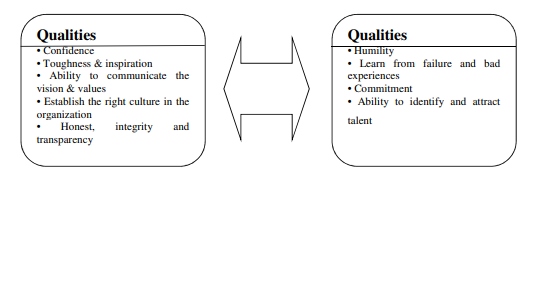
Figure 11: Qualities of a leader
Source: (Muteswa, 2016)
Among all the leadership aspects, emotional intelligence is a critical aspect to be followed by a leader. Emotional intelligence consists of four things- social awareness, self-awareness, social skill, and self-management. The good traits and ability of a leader makes one different from a boss. A leader always focuses on teamwork and generates enthusiasm, whereas a boss acts on authority and takes credit for the entire work (Muteswa, 2016). The effectiveness of leadership is considered when the leadership of an individual is able to influence the group performance and results positively for the organization. Leadership effectiveness can be measured in two ways- specific outcomes of leadership and evaluation of subordinates. The attributes of effective leaders are specific, which makes them different from others (Madanchian et al., 2017). One of the examples of effective leadership is the leadership of Steve Jobs, the CEO of Apple. There are different leadership styles applied by leaders based on organizational needs and the dynamic need of the market. The leadership style of Steve Jobs is autocratic. Autocratic leaders are also known as authoritarian leaders, who carry clear expectations that need to be done. The leadership of Steve Jobs can be considered as a combination of autocratic and transformational leadership as he possesses both controlling and coaching attributes in his leadership (Valentine, 2014).
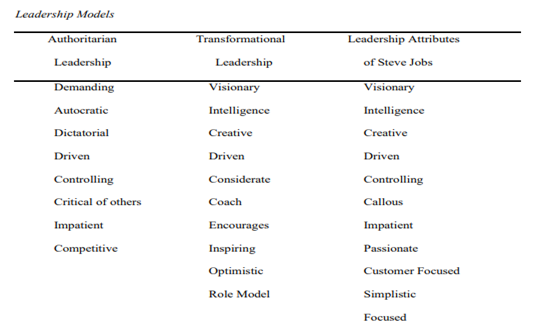
Figure 12: Leadership attributes of Steve Jobs
Source: (Valentine, 2014)
Q3.2. Critically evaluate the role of leadership in your organization and characteristics of effective leader (s).
The role of leadership and organizational outcomes are interlinked with each other. The key characteristics of an effective leader are competency, honesty, inspiration and motivation, good communication skill, and equality. The leaders act as per the organizational goal and the target to meet the effectiveness of the organization. There are some key elements of organizational effectiveness are employee satisfaction, communication effectiveness, brand image, and customer satisfaction. Based on these perspectives, a leader needs to develop the best strategies to meet the ultimate goal of the organization (Meraku, 2017). Among all the key criteria for organizational effectiveness, communication is a crucial part that a leader needs to focus more on. Apart from honesty, integrity, and communication, there are other characteristics of an effective leader and they are- accountability, empowerment, innovation, resilience, empathy, and teamwork. The characteristics of leaders differ from one organization to another, so as their organizational performance (Kapur, 2020). The leadership style followed by the leader Reed Hastings, CEO of Netflix is transformational leadership. Based on the increasing competition in the market, Reed followed a competition-based model to attract foreign markets. The leadership style of Rash reflects his key leadership characteristics such as consumer focus, competition focus, and effective communication, which makes Rash an effective leader (Ndindeng, 2020).
In this context, I will analyze the role of the marketing manager of our organization as an effective leader.
|
Role of the leader |
Positive practices |
Negative practices |
|
Decision maker |
Prefers team opinion in the decision-making strategies. |
Causes team conflict sometimes due to rejection of opinion. |
|
Communication |
Team members are allowed to communicate at any time face to face or via virtual media. |
The organizational structure for the communication is not followed by the leader, which creates confusion about opinion to upper management. |
|
Motivator and supporter |
The leaders provide emotional supports to teammates. |
Sometimes avoids individual needs, so it ultimately affects the retention of teammates. |
|
Team management |
Follows team management skills to eliminate conflict, improve teamwork and ensure organizational goals. |
Fails to eliminate team biasness. |
|
Transparency |
The proper performance measurement technique is followed to review the growth of performance. The performance of each member is tracked based on pre-developed milestones. |
One performance-based metric is followed that only progresses the growth of employees based on the view of the leader. |
|
Accountability |
The accountability in terms of targets is maintained individually to review the individual growth. |
Fails to align the team performance and individual performance. |
Q3.3. Identify relevant and suitable leadership development activities and experiences.
Leadership development activities are crucial for an organization for both individual contexts as well as organizational contexts. The key aim of leadership development activities is to increase the overall productivity of an organization by improving the performance of employees. There are five ways to conduct the leadership development practices in an organization and they are- personal development, integration of organizational and leadership development, own development, human development, and collective leadership development (Kjellström, Stålne, and Törnblom, 2020).
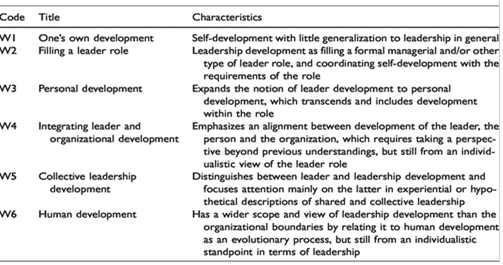
Figure 13: Types of leadership development
Source: (Kjellström, Stålne and Törnblom, 2020)
The complexity of the different types of leadership development is different from each other and the strategies to develop leadership should be based on the complexity of the types. The main reason for implementing leadership development activities are saving the cost and time, achieving better outcomes with the right leadership, developing the new talent of employees, and ensuring individual development. There are other types of leadership development activities that are implemented by many organizations such as feedback 360 and coaching. Feedback 360 is one of the effective leadership development activities that focus on both organizational and individual performance. In the context of the organization, feedback 360 reinforces the culture of the organization, ensure better opportunity for the career improvement of employees, and ensure effective training plans. On the other hand, it builds the skill of individuals and highlights the loopholes that need to be addressed (Beheshtifarand Vazir-Panah, 2012). Coaching is another leadership development tactic that acts as a crucial tool for training and development. Compared to training, coaching is a two-way relationship that results more positively. The success of the coaching technique depends on the effective relationship between the trainer and the organization.
Leadership development programs can be implemented to build the leadership capacity in an organization. The leadership development programs are purposeful, empowering, inclusive, and process-oriented in nature. The study of Roupnel, Rinfret, and Grenier (2019) support the fact that coaching, action learning and mentoring are three core leadership development programs. Mentoring is somehow different from coaching as it is based on a supportive relationship between two individuals, in which the experiences, knowledge ad strengths are shared from mentor to mentee. The key role of a mentor is to support, provide feedback and direct to the mentee for personal development as well as overall development. Action learning is another leadership development program, which is the process of learning and reflection aimed to resolve practical problems. When action learning is considered for a leadership development program, then it is conducted for smaller groups.
Task 4
Q4.1. Critique the role of HR management and development And How HR and other managers can productively work together.
The role of HR management in an organization is significant as engages the workforce of an organization to ensure better productivity. HRM practices mainly evolve the working environment and working conditions that are based on organizational commitment. Organiztaional commitment mainly consists of involvement, loyalty, and identification of the workforce that keep the employee more engaged at their workplace (Boon, Den Hartog, and Lepak, 2019). HRM practices are considered a key method to encourage and employees towards their work and maintain employee commitment. The HRM practices and HR development are directly linked with employee commitment and employee job satisfaction, which ultimately influences the retention of employees and productivity of the organization. If the employees are treated well as well maintained through proper HR practices, then it results in positive outcomes in terms of employee satisfaction and organizational performance (Cherif, 2020).
I am going to consider the marketing manager, production manager, and finance manager to reflect on how the HR manager in an organization can work together productively.
Marketing manager: the key role of a marketing manager is managing the positioning, and promotion of the brand and tracking the performance of the marketing team. The marketing manager mainly focuses on the improvement of brand image and reputation in the market to attract more customers. In the context of the marketing management department, the role of the HR manager cannot be denied. The key functions of the HR manager centralize recruitment and selection and to select adequate persons for the marketing team, the communication with marketing manager is crucial (Mwaniki and Gathenya, 2015). The integration of work by marketing and HR manager ultimately improves the customer base, which is a key part of organizational performance.
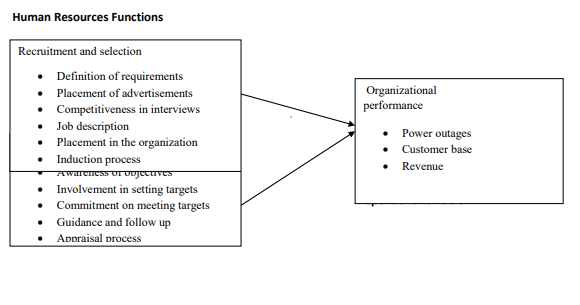
Figure 14: Functions of human resource
Source: (Mwaniki and Gathenya, 2015)
Based on the performance growth reviewed by the marketing manager, the HR manager will further discuss whether the training of the marketing team needs to be improved further or the existing training is enough. During recruitment and selection of the candidate, proper job description and specification should be provided to the candidates to make them aware of their responsibilities in the future. To decide the job description and specification, the marketing manager and HR manager needs to work together.
Production Manager: Production is a crucial part of business activity especially for the organizations, for which the quality of the end product or service depends on the performance of the production team. In this context, the role of the production manager is crucial to guide the team members and to ensure the members can meet the standard of the product or end service. As the output of the product team has greater significance on the overall organization performance, the support of the HR manager is crucial. Employee health and safety is another factor that is ensured and reviewed by the HR manager to provide a better work environment for the employees.
Finance manager: The salary and employee-related expenses are a part of the finance department and the finance manager is responsible to manage the expenses. The employee salary and pay structure is a part of HR manager's concerns, due to which, the integration of work of finance and HR manager carries utmost importance.
Q4.2. Discuss the need for professional and qualified HR practitioners.
The role of the HR manager in an organization is diverse, so it cannot be bounded by limited skills and knowledge to carry out the operations of an organization. Among the diverse role of an HR professional, the key role is talent manager, strategic partner, diversity manager, functional expert, performance manager, and change agent. In each role, the responsibility of an individual HR manager differs. In the case of strategic partners, an HR manager is responsible for developing strategic ideas to develop the performance of employees and needs to develop different HR strategies (Sharma and Shastri, 2012). On the other hand, an HR manager as a diversity manager plays the role of transfer of knowledge and skills between senior and new employees.
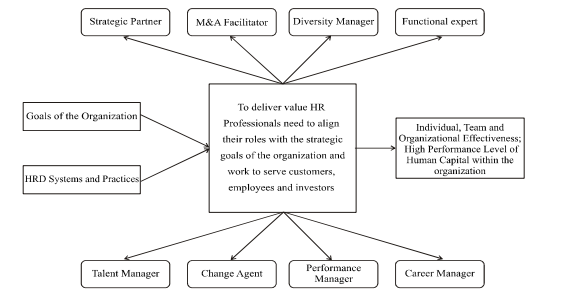
Figure 15: Diverse role of an HR manager
Source: (Sharma and Shastri, 2012)
Organizations prefer more professional and qualified HR personnel as the HR practitioners with professional experience and skills can carry out the HR activities in a better way. There are three types of skills required for an HR professional and they are leadership skills, HR management skills, and HR development skills. The HRM skills include HRM practices, HRM strategies, people management, strategic alliances, communication, and relational skill. The leadership consists of alignment with corporate governance, employee performance, employee motivation, employee satisfaction, and development opportunities(Sousa, 2017). The HRD skills include implementation of new technologies, innovation, organizational change, relational knowledge, and decision-making for development. Apart from these skills, an HR manager must excel in organizational skills, communication, training and development skill, and empathetic skill. Empathetic skill allows the HR professional to think as per the perspectives of employees while making decisions. The skills and qualifications regarding HR should be present in an HR professional, which helps in planning, managing, and developing the human resource for better productivity (Samwel, 2018). During the planning of HR, different skill is required at a different stage of the planning process, so an HR professional must excel in the skills and required adequate knowledge to meet organizational excellence.
Q4.3. Critically evaluate how ethics and organizational culture can be influenced by HR practices.
The role of HR practices on ethics and organizational culture is significant. The HR practices of Apple centralize its HR practices on two key concepts employee empowerment and employee engagement. Employee engagement and employee empowerment are crucial parts of Apple's HR practices and it significantly influences the organizational culture as well as the ethics of Apple (Vergara, 2014). The two tables below reflect on how the HR practices of Apple have an impact on the organizational culture and ethics of Apple.
HRPractice Impact on the Organizational Culture
Fearless feedback Fearless feedback is a part of employee engagement at Apple and it allows the employees to provide their opinion and present their views on certain facts. The key aim of the fearless feedback is to improve the experience of staff and customers, which reflects that the organizational culture of Apple is an open culture that respects the views of all rather than centralized on a specific view.
|
HRPractice |
Impact on the Organizational Culture |
|
Fearless feedback |
Fearless feedback is a part of employee engagement at Apple and it allows the employees to provide their opinion and present their views on certain facts. The key aim of the fearless feedback is to improve the experience of staff and customers, which reflects that the organizational culture of Apple is an open culture that respects the views of all rather than centralized on a specific view. |
|
Education to employees |
Apple provides education to its employees to learn more about technological advancement. It is a part of its culture to provide unique opportunities for its employees to learn something new (Arocha, 2017). The learning opportunity not only helps the employees to learn in a better way but also empowers the employees to do better. |
|
HR Practices |
Impact on Ethics |
|
Anti-discrimination |
Apple promotes anti-discrimination HR practices to provide equal opportunity to employees and respect the views of all. Apple also guides its suppliers to do not discriminate against any workers in terms of race, caste, gender, and age. In this context, all the rules and policies of Apple-related HR practices are based on local and national law, which provides glimpses of ethical concerns of the multinational organization. |
|
Working hours |
The working hours at Apple are restricted to 60 hours and it includes overtime. The workers at Apple are provided one day off a week. In the case of a regular workweek, it does not exceed 48 hours (Apple, 2021). For the working hours, Apple follows the national HR laws. The fixed working hour at Apple indicates its ethical practices in terms of employees. |
Conclusion
The paper crucially discusses the HR theories and practices in the context of real-life examples. The importance of HR practices and skills are critically demonstrated in the paper, which reflects that the role of HR in an organization is significant and the work of HR together with other departments is also important.
References
Aloumedjo, Z. and Thierry (2018). MODELIZATION OF HRM AND PERSPECTIVES FOR THE CAMEROON PUBLIC ADMINISTRATION. Thierry *, [online] 5(8). Available at: http://www.ijrsm.com/issues%20pdf%20file/Archive-2018/August-2018/8.pdf [Accessed 28 Oct. 2021].
Amin, M.R. and Munsi, M. (2020). Motivational Techniques for Business Organization – a Case Study of Apple Inc. [online] accounts.google.com. Available at: https://mail.google.com/mail/u/0/#inbox/FMfcgzGlkZDqwmXHBXrlNJTwVFhkdcJGprojector=1&messagePartId=0.2 [Accessed 28 Oct. 2021].
Apple (2021). Apple Supplier Code of Conduct. [online] Available at: https://www.apple.com/supplier-responsibility/pdf/Apple-Supplier-Code-of-Conduct-and-Supplier-Responsibility-Standards.pdf.
Arocha, J. (2017). Getting to the Core: A Case Study on the Company Culture of Apple Inc. A Senior Project presented to. [online] Available at: https://digitalcommons.calpoly.edu/cgi/viewcontent.cgiarticle=1074&context=rptasp.
Arpentieva, M.R., Gorelova, I.V., Kassymova, G.K., Garbuzova, G.V., Kosov, A.V., Lavrinenko, S.V., Malinichev, D.M., Shumova, K.A., Simonov, V.L. and Stepanova, O.P., (2020). Human resource management and dynamic capabilities of educational enterprises: psychological, social and economic aspects. « », (1), pp.242-254.
Beheshtifar, M. and Vazir-Panah, Z., (2012). Leadership development activities. International Journal of Academic Research in Business and Social Sciences, 2(7), p.387. Available at: https://www.researchgate.net/publication/268352093_Leadership_Development_Activities
Boon, C., Den Hartog, D.N. and Lepak, D.P. (2019). A Systematic Review of Human Resource Management Systems and Their Measurement. Journal of Management, [online] 45(6), pp.2498–2537. Available at: https://journals.sagepub.com/doi/full/10.1177/0149206318818718.
Bright, D.S., Cortes, A.H., Gardner, D.G. and Hartmann, E. (2019). Principles of Management. [online] Available at: https://d3bxy9euw4e147.cloudfront.net/oscms-prodcms/media/documents/PrinciplesofManagement-OP.pdf [Accessed 28 Oct. 2021].
Cherif, F. (2020). The role of human resource management practices and employee job satisfaction in predicting organizational commitment in Saudi Arabian banking sector. International Journal of Sociology and Social Policy, [online] ahead-of-print(ahead-of-print). Available at: https://www.emerald.com/insight/content/doi/10.1108/IJSSP-10-2019-0216/full/pdf.
Chikere, C.C., Nwoka and Jude (2015). The Systems Theory of Management in Modern Day Organizations - A Study of Aldgate Congress Resort Limited Port Harcourt. International Journal of Scientific and Research Publications, [online] 5(9). Available at: http://www.ijsrp.org/research-paper-0915/ijsrp-p4554.pdf [Accessed 28 Oct. 2021].
Collins, C.J., (2021). Expanding the resource based view model of strategic human resource management. The International Journal of Human Resource Management, 32(2), pp.331-358. Dermol, V. (2014). (PDF) Differening Approaches to Strategic Human Resource Management. [online] ResearchGate. Available at: https://www.researchgate.net/publication/228215383_Differening_Approaches_to_ Strategic_Human_Resource_Management [Accessed 28 Oct. 2021].
Gitomer, D. and Crouse, K. (2019). Studying the Use of Research Evidence: A Review of Methods. Haque, M.F., Haque, M.A. and Islam, M.S. (2014). Motivational Theories – A Critical Analysis. [online] ResearchGate. Available at: https://www.researchgate.net/publication/306255973_Motivational_Theories_-_A_Critical_Analysis [Accessed 28 Oct. 2021]. Jabri, B.A. and Ghazzawi, I. (2019). (PDF) Organizational Commitment: A Review of the Conceptual and Empirical Literature and a Research Agenda. [online] ResearchGate. Available at: https://www.researchgate.net/publication/331635975_Organizational_Commitment_A_Review_of_ the_Conceptual_and_Empirical_Literature_and_a_Research_Agenda [Accessed 28 Oct. 2021].
Jewell, D.O., Jewell, S.F. and Kaufman, B.E., (2020). Designing and implementing high-performance work systems: Insights from consulting practice for academic researchers. Human Resource Management Review, p.100749. Kapur, R. (2020). Characteristics of Effective Leadership. [online] ResearchGate. Available at: https://www.researchgate.net/publication/344348836_Characteristics_of_Effective_Leadership.
Kjellström, S., Stålne, K. and Törnblom, O. (2020). Six ways of understanding leadership development: An exploration of increasing complexity. Leadership, [online] 16(4), p.174271502092673. Available at: https://journals.sagepub.com/doi/full/10.1177/1742715020926731.
Madanchian, M., Hussein, N., Noordin, F. and Taherdoost, H. (2017). Leadership Effectiveness Measurement and Its Effect on Organization Outcomes. Procedia Engineering, [online] 181(181), pp.1043–1048. Available at: https://www.sciencedirect.com/science/article/pii/S1877705817310950.
Meraku, A. (2017). Role of Leadership in Organizational Effectiveness. Journal of Economics, Business and Management, [online] 5(11), pp.336–340. Available at: http://www.joebm.com/vol5/535-ES0060.pdf.
Muteswa, R. (2016). Qualities of a Good Leader and the Benefits of Good Leadership to an Organization: A Conceptual Study. European Journal of Business and Management, [online] 8(24). Available at: https://core.ac.uk/download/pdf/234627475.pdf.
Mwaniki, R. and Gathenya, J. (2015). Role of Human Resource Management Functions On Organizational Performance with reference to Kenya Power & Lighting Company â Nairobi West Region. International Journal of Academic Research in Business and Social Sciences, [online] 5(4). Available at: https://hrmars.com/papers_submitted/1584/Role_of_Human_Resource_Management_Functions_On_
Organizational_Performance_with_reference_to_Kenya_Power_Lighting_Company_%E2%80%93_Nairobi_West_Region.pdf.
Ndindeng, A. (2020). (PDF) Transformational Leadership in Netflix and Dangote Group. [online] ResearchGate. Available at: https://www.researchgate.net/publication/342082502_Transformational_Leadership_in_Netflix_and_Dangote_Group.
Oluwatoyin, O. (2021). The Application of Elton Mayol’s Human Relations Theory and Douglas McGregor’s Theory X and Y to Achieve Organization Objectives. [online] Available at: https://www.hilarispublisher.com/open-access/the-application-of-elton-mayols-human-relations-theory-and-douglas-mcgregors-theory-x-and-y-to-achieve-organization-obje.pdf [Accessed 28 Oct. 2021].
Patro, C.S. (2013). The Impact of Employee Engagement on Organization’s Productivity. [online] ResearchGate. Available at: https://www.researchgate.net/publication/281967834_The_Impact_of_Employee_Engagement_on_Organization [Accessed 28 Oct. 2021].
Pryor, M.G., Smith, D. and Toombs, L.A. (2019). (PDF) Strategic Implementation as a Core Competency The 5P’s Model. [online] ResearchGate. Available at: https://www.researchgate.net/publication/338236699_Strategic_Implementation_as_a_Core_Competency_The_5P [Accessed 28 Oct. 2021].
Roupnel, S., Rinfret, N. and Grenier, J. (2019). Leadership development: three programs that maximize learning over time. [online] Journal of Leadership Education. HRM assignmentAvailable at: https://journalofleadershiped.org/jole_articles/leadership-development-three-programs-that-maximize-learning-over-time/.
Sadalla, A. and Ülgen, B. (2018). MBA HUMAN RESOURCE MODELS: HARD AND SOFT. ISTANBUL COMMERCE UNIVERSITY MBA HUMAN RESOURCE MODELS: HARD AND SOFT.
Samwel, J. (2018). Human Resource Planning as an Important Practice to Anticipate Future Human Resource Requirements of the Organization -Literature review. Online) International Journal of Research in Business Studies and Management V5 • I3, [online] 5(3), p.24. Available at: https://www.ijrbsm.org/papers/v5-i3/4.pdf.
Serpa, S. and Ferreira, C.M. (2019). (PDF) The Concept of Bureaucracy by Max Weber. [online] ResearchGate. Available at: https://www.researchgate.net/publication/330474921_The_Concept_of_Bureaucracy_by_Max_Weber [Accessed 28 Oct. 2021].
Shala, B., Prebreza, A. and Ramosaj, B. (2021). The Contingency Theory of Management as a Factor of Acknowledging the Leaders-Managers of Our Time Study Case: The Practice of the Contingency Theory in the Company Avrios. OALib, 08(09), pp.1–20.
Sharma, D. and Shastri, L. (2012). ROLES FOR HR PROFESSIONALS. Integral Review -A Journal of Management, [online] 5(2). Available at: https://iul.ac.in/DepartmentalData/Management/JP/IRJM_Paper1_dec2012.pdf [Accessed 14 Nov. 2020].
Shi, X., Liu, onathan T. and Sirkeci, I. (2016). Psychological Determinants of Brand Loyalty: The case of Apple and Samsung. [online]
Researchgate. Available at: https://www.researchgate.net/publication/341434372_Psychological_Determinants_of_Brand_Loyalty_
The_case_of_Apple_and_Samsung [Accessed 28 Oct. 2021].
Sotsenko, A. (2017). A Rich Context Model Design and Implementation. [online] Available at: https://www.diva-portal.org/smash/get/diva2:1076331/FULLTEXT01.pdf [Accessed 28 Oct. 2021].
Sousa, M.J., (2017). Human resources management skills needed by organizations. In Leadership, Innovation and Entrepreneurship as Driving Forces of the Global Economy (pp. 395-402). Springer, Cham. Available at: https://www.researchgate.net/publication/312008509_Human_Resources_Management_Skills_Needed_by_Organizations
Sun, L. and Bunchapattanasakda, C. (2019). (PDF) Employee Engagement: A Literature Review. [online] ResearchGate. Available at: https://www.researchgate.net/publication/330139773_Employee_Engagement_A_Literature_Review [Accessed 28 Oct. 2021].
Valentine, C. (2014). iLeadership: the leadership style of Steve Jobs iLeadership: the leadership style of Steve Jobs. [online] Available at: https://digitalcommons.pepperdine.edu/cgi/viewcontent.cgiarticle=1715&context=etd.
Vandana and Renuka Murthy, T. (2021). Employee Engagement-A Theoretical Perspective. International Journal for Research in Engineering Application & Management (IJREAM), [online] 06, pp.2454–9150. Available at: http://ijream.org/papers/IJREAMV06I1272033.pdf [Accessed 28 Oct. 2021].
Vergara, R.A.G. (2014). (PDF) Providing the Apple Experience: Enhancing organizational performance through employee engagement and empowerment. [online] ResearchGate. Available at: https://www.researchgate.net/publication/303860049_Providing_the_Apple_Experience_Enhancing_
organizational_performance_through_employee_engagement_and_empowerment.












